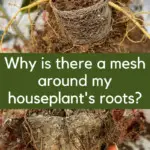When you start bringing plants into your home, you’re automatically enrolled in a crash course on all the nemeses you’ll be facing. Whether it’s aphids, thrips, gnats or root rot, there is a steep learning curve to keeping plants happy.
I’m speaking from experience here. It took me a while to learn which plants need more water and which ones can go without; which ones require full sun and which ones will burn to a crisp.
And just when I thought I had mastered all the variables, up pops another one: the evil root mesh.
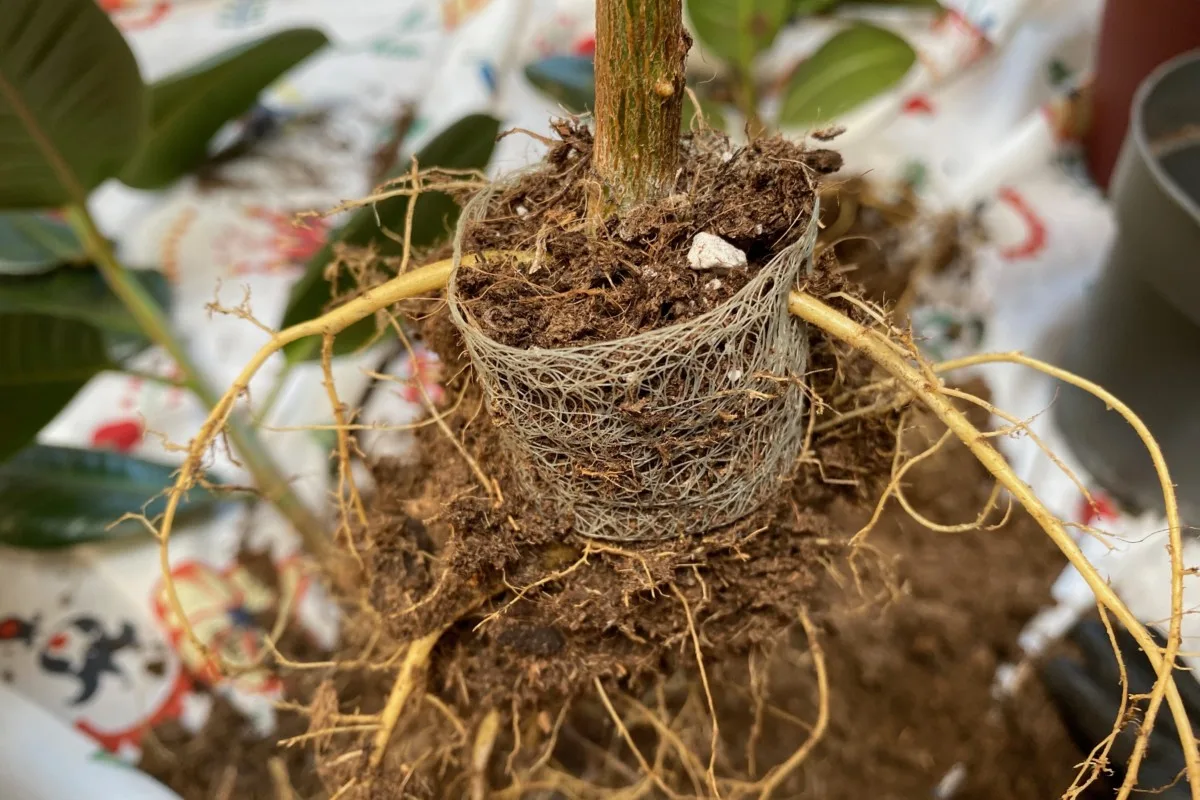
I’ve been keeping plants for close to fifteen years now, but the root mesh has been a relatively recent addition to my plant headaches. I’d say I started noticing them more in the last three years or so.
I’m not in the habit of repotting my new plants as soon as I get them. I usually let them adapt to their new environment (my house). It takes a while since they’re transitioning to new conditions in terms of light, temperature and humidity. So I’ll keep an eye on plants for at least a couple of months before I transfer them to a new pot.
Imagine my surprise when I started repotting the plants that were doing poorly and kept finding their roots tangled in a fabric or netting mesh.
But what is this mesh net around my houseplant’s roots?
The root mesh is called a propagation plug. My guess is that the rapid proliferation of the root plug coincides with the houseplant trend becoming more popular and growers needing to put out more and more houseplants every year.
I dug deeper, including reading trade magazines, and I found that this root mesh serves an excellent purpose for plant growers and sellers.
The root mesh has many advantages for plant growers.
Plant growers place young cuttings in it and top it up with soil. For these baby plants, the plugs help regulate moisture and keep the plant from focusing too much on growing roots. The plant will redirect its energy into producing lush foliage rather than filling up a larger pot with roots.
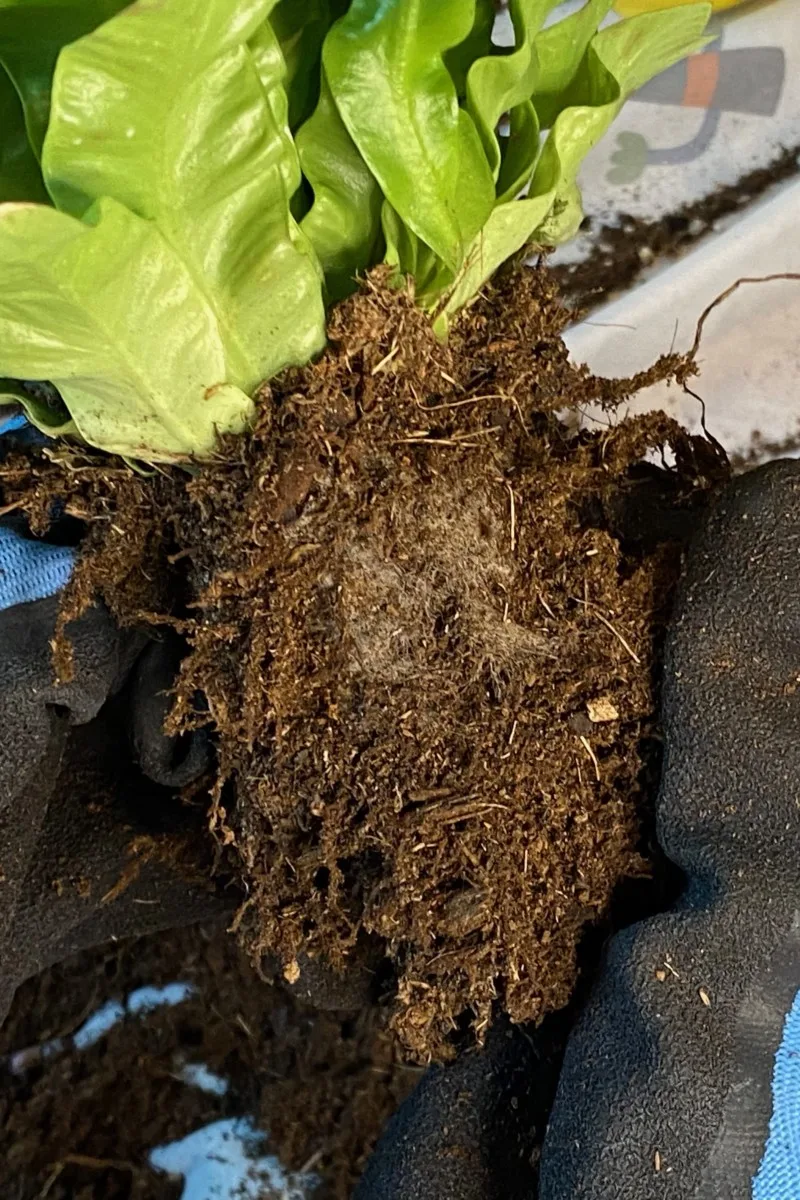
After all, it’s what’s above ground that attracts buyers. (I’m totally guilty of the “buy the big plant syndrome,” too!)
The mesh also creates a very useful growing vessel for commercial growers that start their plants from seed. The mesh improves germination by preventing the seeds from drying up too fast.
In addition to these advantages, the plant plug mesh makes it easier for growers to repot the plants – say, to upsize their containers – and to combine several plants into a single arrangement before offering the plants for sale.
You’re also likely to see the hard-shell plastic cup around the roots of plants grown hydroponically.
Why won’t growers remove root meshes?
Some nurseries remove the mesh before they send the plants to retailers. But since this kind of work requires a lot of man-hours and doesn’t bring immediate benefits to the growers, some just choose to skip this step and sell the plant as-is. An added advantage is that the plug helps keep the plant stable during transport from nurseries to retailers.
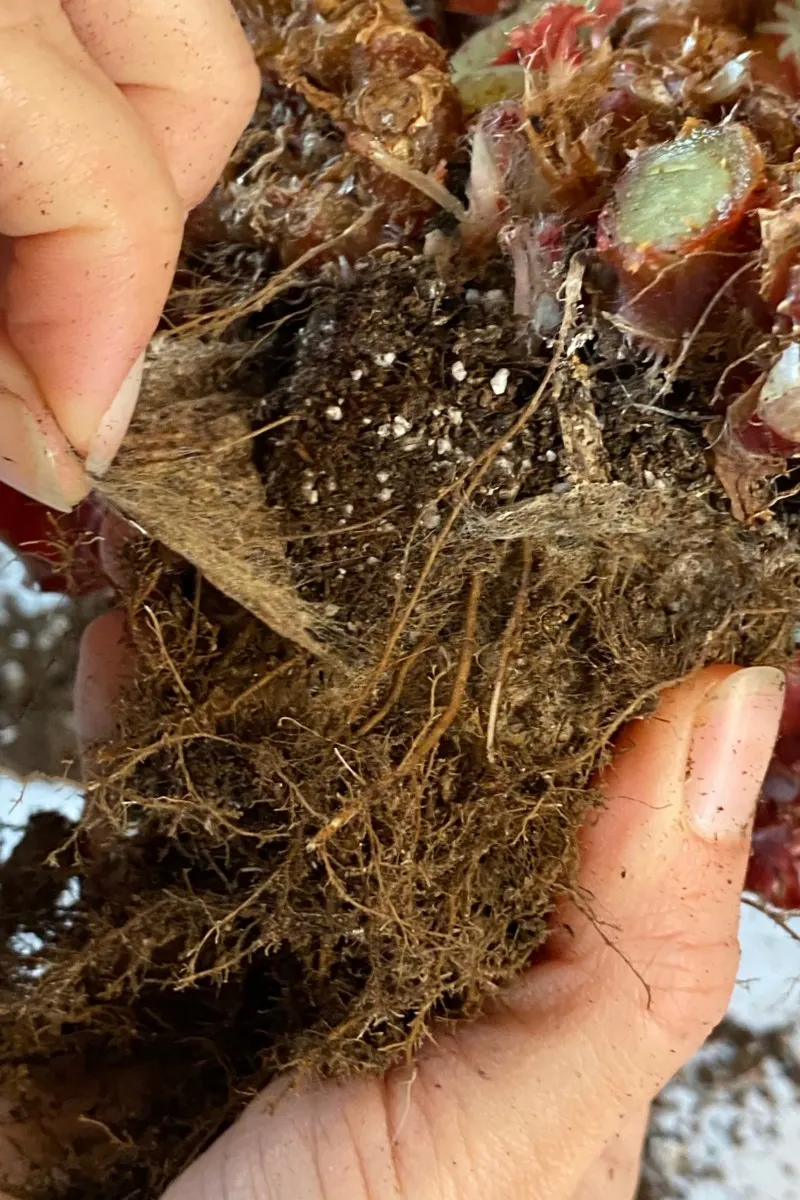
The root mesh serves a purpose for sellers too. The root fabric keeps the plants from growing too large while they’re on display in the store.
I honestly can’t fault the growers or the sellers when the demand for houseplants skyrocketed in the past decade. But I do wish there was a label to indicate to the end consumer that the plant they’re buying still has a mesh constricting its roots.
Is the root mesh biodegradable?
Some sellers claim that their root mesh is biodegradable. But they don’t mention how fast it will biodegrade and what effects it will have on the plant’s growth in the meantime.
In my experience, none of the root plugs that I’ve removed were biodegradable. Some of them were like hard plastic egg cups. Others were made out of the kind of plastic that is used for packaging garlic. Others still were made out of a more malleable plastic, similar to the one used for tea bags.
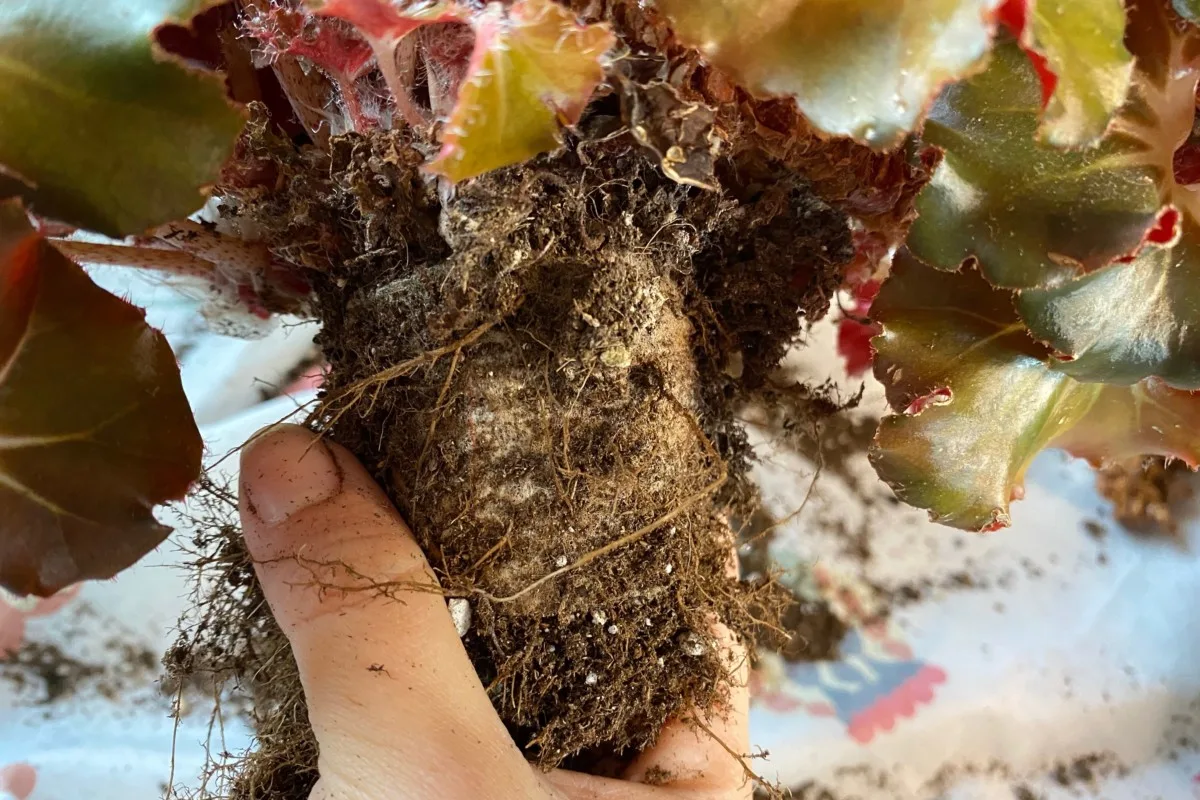
The root mesh around my begonia had a tea bag texture, but it wasn’t biodegradable.
So despite industry claims, I have not found any of these meshes to be biodegradable.
The only biodegradable plant plugs that I found were the ones around some of my garden plants, ironically. The plug looks like a cardboard seed starter; it’s often made out of fertilizer pellets and will break down in your garden.
What effect will root meshes have on the houseplant?
If the plant is a slow grower (say, a succulent or a cactus), the root mesh might have limited effects. Plants with small root structures won’t be as quickly affected as large plants that tend to spread. But in the long run, it’s still a good idea to remove the mesh.
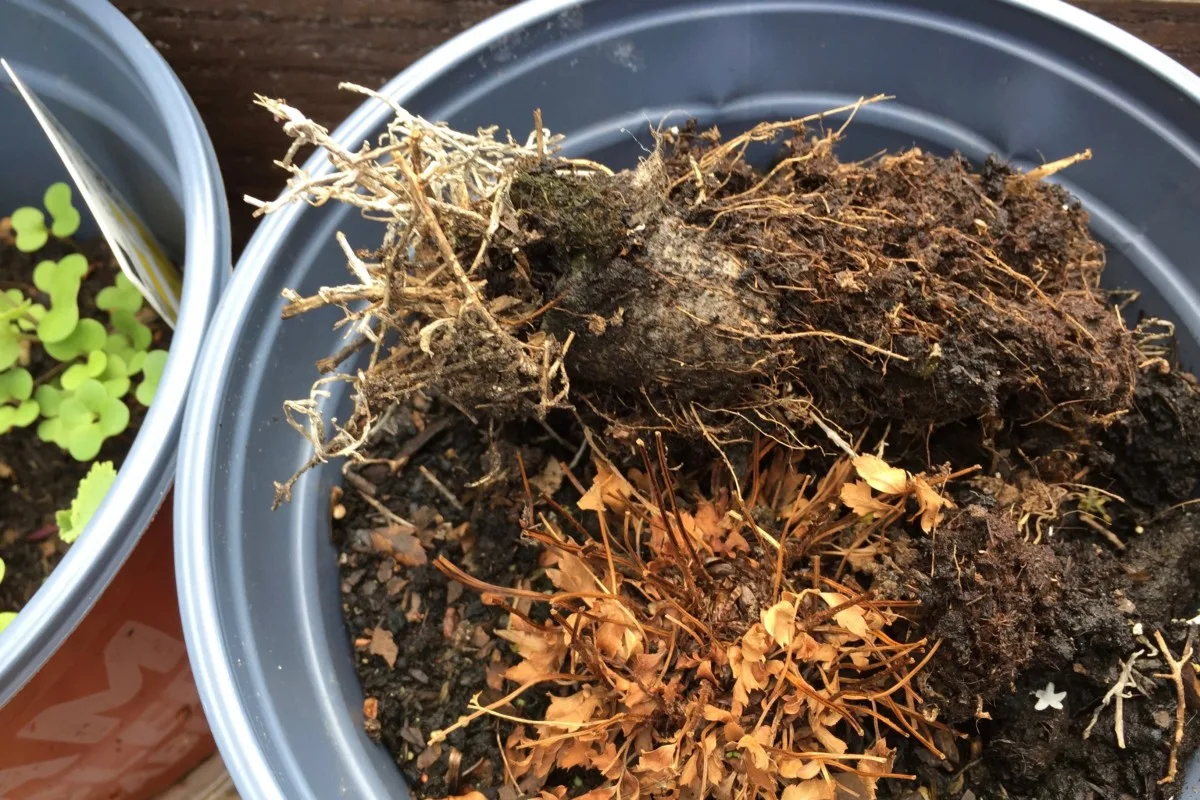
The problems start creeping up when your plant is a fast grower.
Most meshes will not allow the roots to grow as large as they need to, which will, in turn, result in a decline in the plant’s health. If the mesh is wrapped just around the side of the roots, it will be more forgiving. But if the mesh extends like a cup under the entire root structure, you’re better off removing this plug.
The mesh may interfere with water absorption.
In my experience, the mesh interferes not just with root growth, but with water absorption. This can happen in two ways. First, the mesh traps too much water inside it, especially if the roots are thin and hairy. Conversely, it can have the opposite effect. As the roots grow more and more cramped, the soil and roots get so tangled and compacted that water absorption becomes impossible.
Take, for example, this rubber plant (Ficus elastica) I bought from a large retailer. It started its decline a couple of weeks after I brought it home. You can expect a certain amount of leaf loss, but this girl was losing leaves at a rapid pace in spite of healthy top growth.
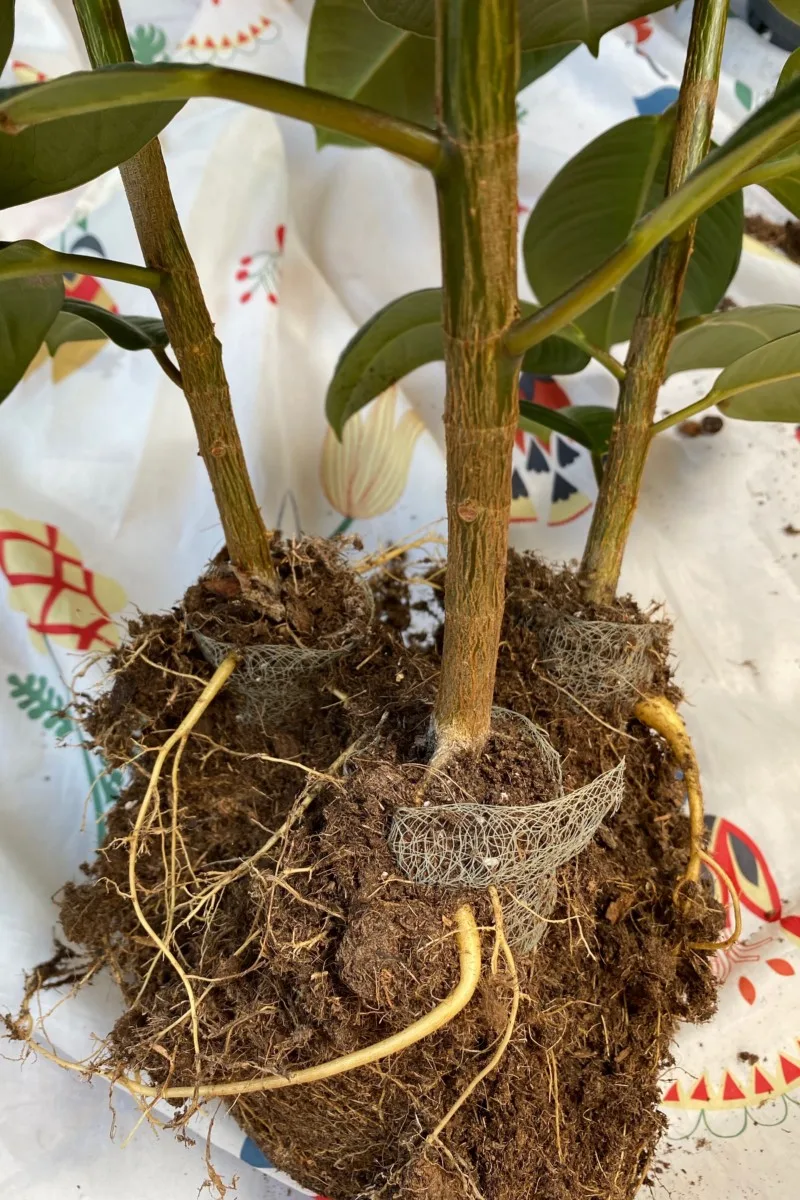
The bottom leaves would just turn yellow and drop within the span of a couple of weeks. After a few months of not being able to diagnose the problem, I decided to repot the ficus. I thought that the pot was too small and the plant had become root bound.
It was root bound, alright! But not by the pot.
Every single one of the three rubber plant stems was tightly wrapped and trying to burst out of a very hard mesh.
It took two people, twenty minutes and a sharp pair of scissors to release the roots from the death grip of the plastic fabric. Not only did the rubber plant start recovering as soon as I removed the root netting, but it’s now thriving.
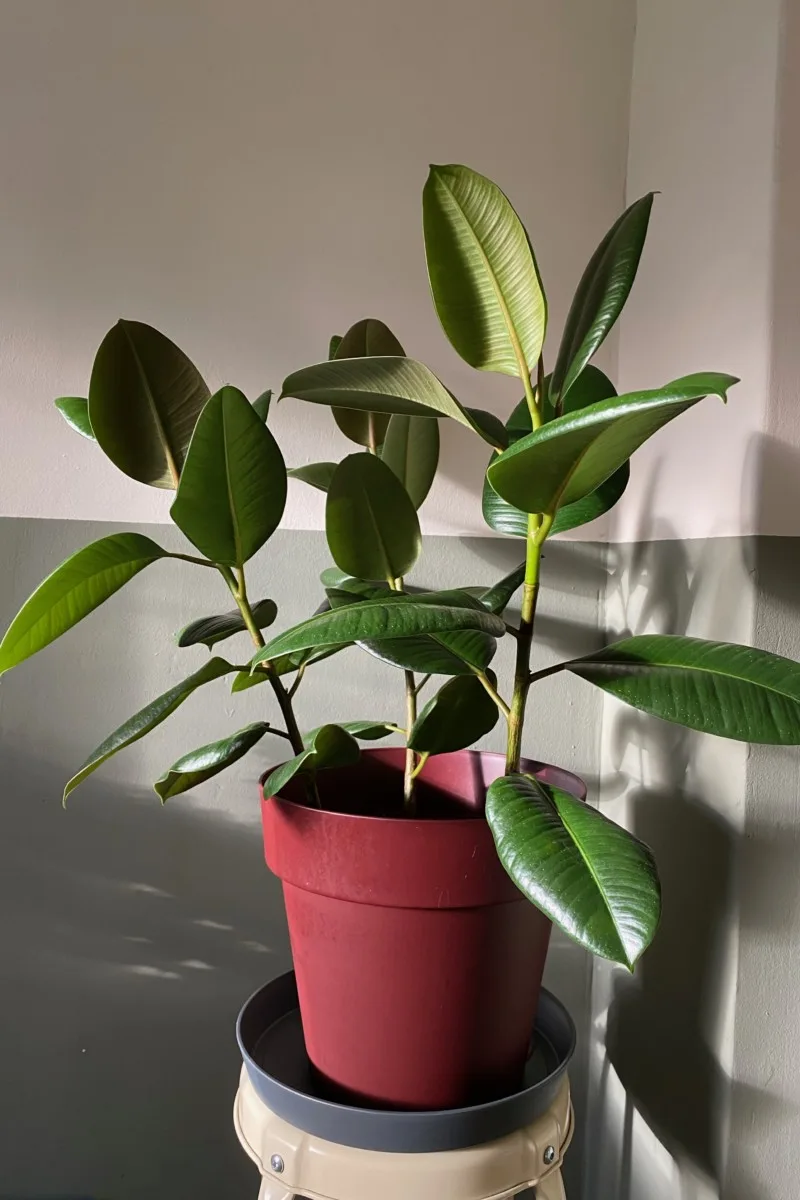
This is just one story of one houseplant that I brought back from the brink after removing the mess. If you’re looking for the advice of a fellow plant grower, I would remove the mesh as soon as possible.
Should I remove the plant plug around my houseplant’s roots?
There is no official research on the effect of plant plugs on your houseplants, of course. (Who would research that anyway? The horticultural industry that uses it?) My recommendation is based on my experience and that of the people I connected with in online plant communities.
Every single one of my houseplants that had a mesh around its roots was struggling. And every single time I removed the mesh, the plant bounced back to health. So far, I’ve removed meshes from about ten houseplants over the course of a couple of years.
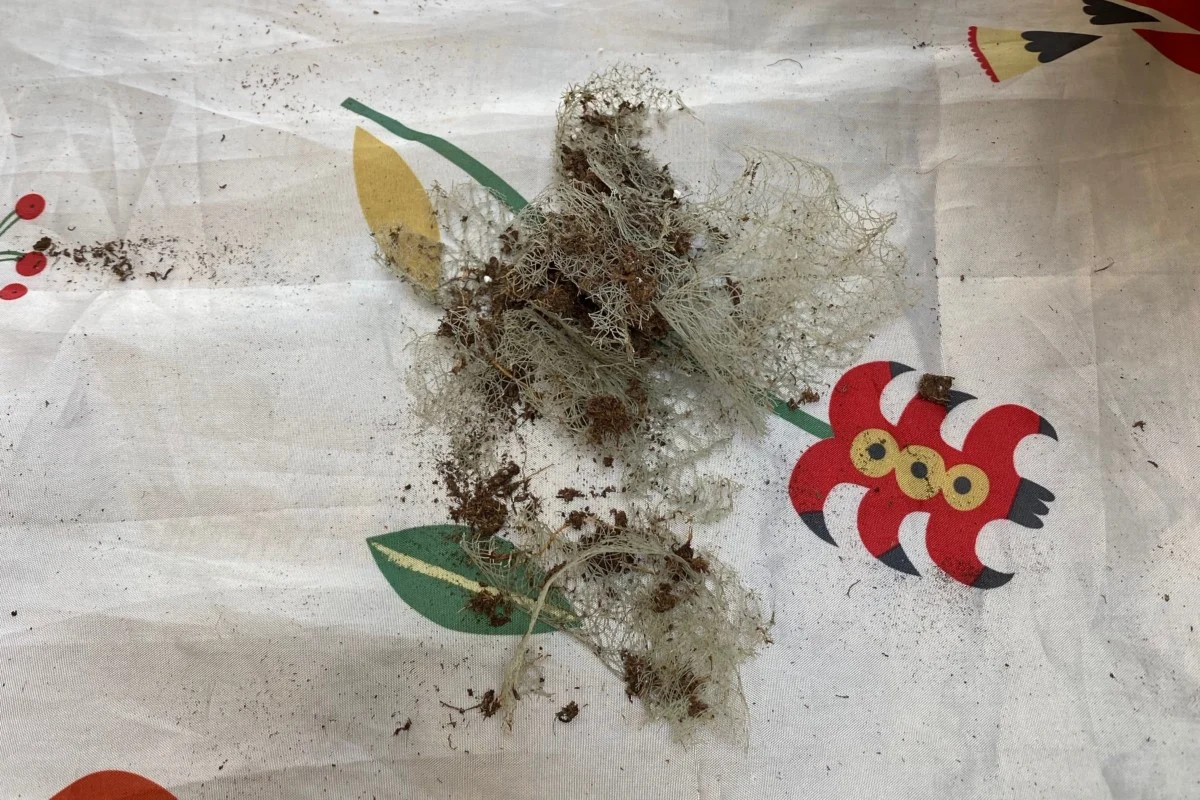
So my recommendation is to remove the mesh around the roots. Whether you do that as soon as you bring the plant home from the store, or you wait for the plant to show signs of distress, is your decision.
But keep in mind that while small plants will have no trouble growing in the mesh, the larger the plant gets, the larger its roots will grow. And large roots are harder to untangle, but faster to bounce back if you happen to snap a few.
How do I remove the mesh around the roots?
When you remove the mesh, do it as gently as possible and avoid pulling at the roots. If the roots get a bit disturbed in the process, they will recover. Some meshes will peel right off. Or you might have to cut them off. Start by cutting the more rigid root nets into smaller strips before you attempt to remove them.
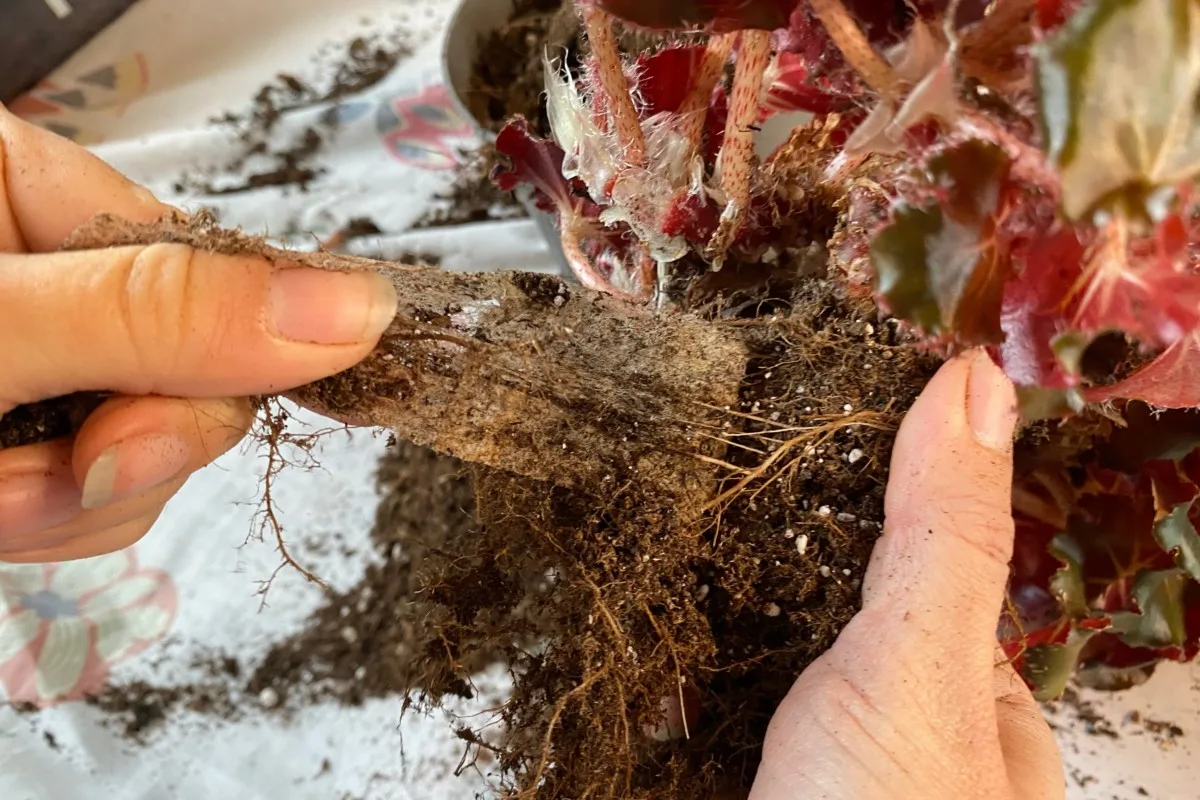
The fabric mesh is easier to remove. It just peels right off.
If too many roots break during mesh removal, you can place the plant in water to reroot. Only transplant it back into soil once the root structure looks robust enough.
It’s good to know that it might take longer to see signs of recovery for some of the plants that had their root system disturbed during mesh removal. The plant will be focusing its energy on growing back its roots and will not be looking very happy above ground. Don’t be tempted to overwater or over-fertilize a plant that’s recovering.
Should I check every plant I buy?
I now check every single houseplant that I bring home. Sometimes, a bit of probing right below the stem is enough to tell whether there’s a mesh wrapped around the roots. If I can’t tell, I’ll just let it adjust for a couple of weeks (up to a month) then repot the plant.
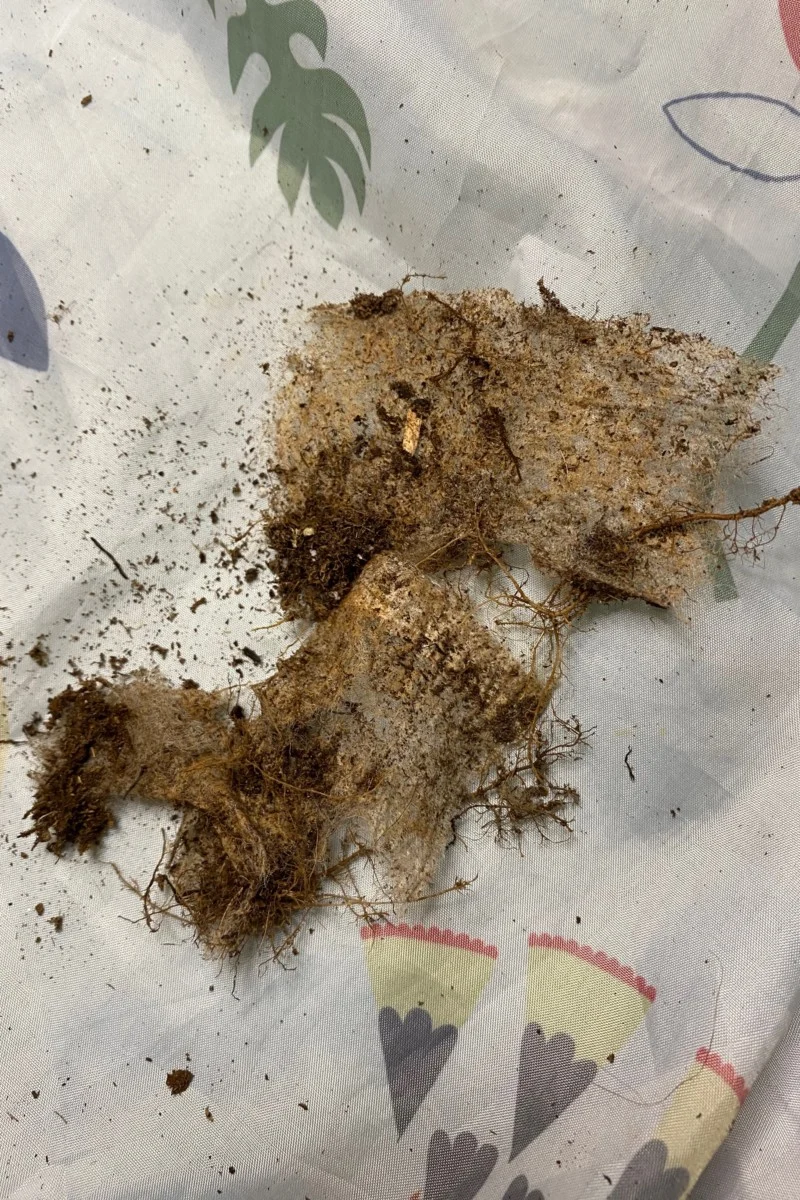
During my last repotting session, three out of the five plants that I repotted had some sort of net constricting the roots. I bought the plants from different vendors: a local nursery, a chain store, an indie plant shop and a botanical garden. That goes to show that root plugs are ubiquitous, and there’s no telling who grew your houseplants.
Plant plugs are not necessarily a bad thing, depending on how you look at them. But they are the result of a booming industry trying to keep up with demand and keep the prices affordable.
While we can advocate for the horticultural industry to reduce the use of plastic meshes, it’s always a good idea to take the plant’s health into our own hands as soon as we bring the plant home.
What to Read Next:
Why You Should Aerate Your Houseplant Soil (& How to Do It Properly)
6 Signs Your Houseplants Need To Be Repotted & How To Do It

Get the famous Rural Sprout newsletter delivered to your inbox.
Including Sunday musings from our editor, Tracey, as well as “What’s Up Wednesday” our roundup of what’s in season and new article updates and alerts.


